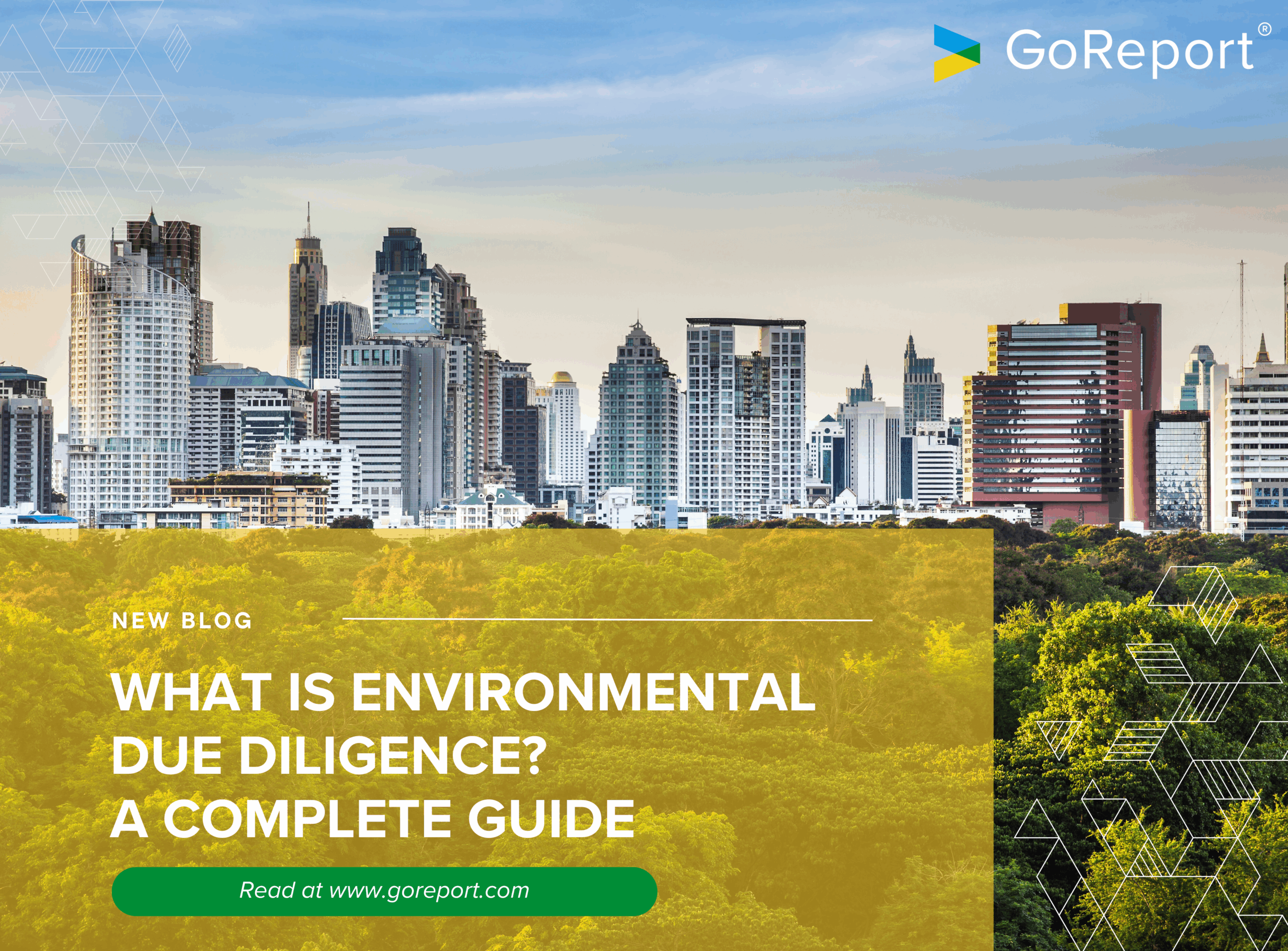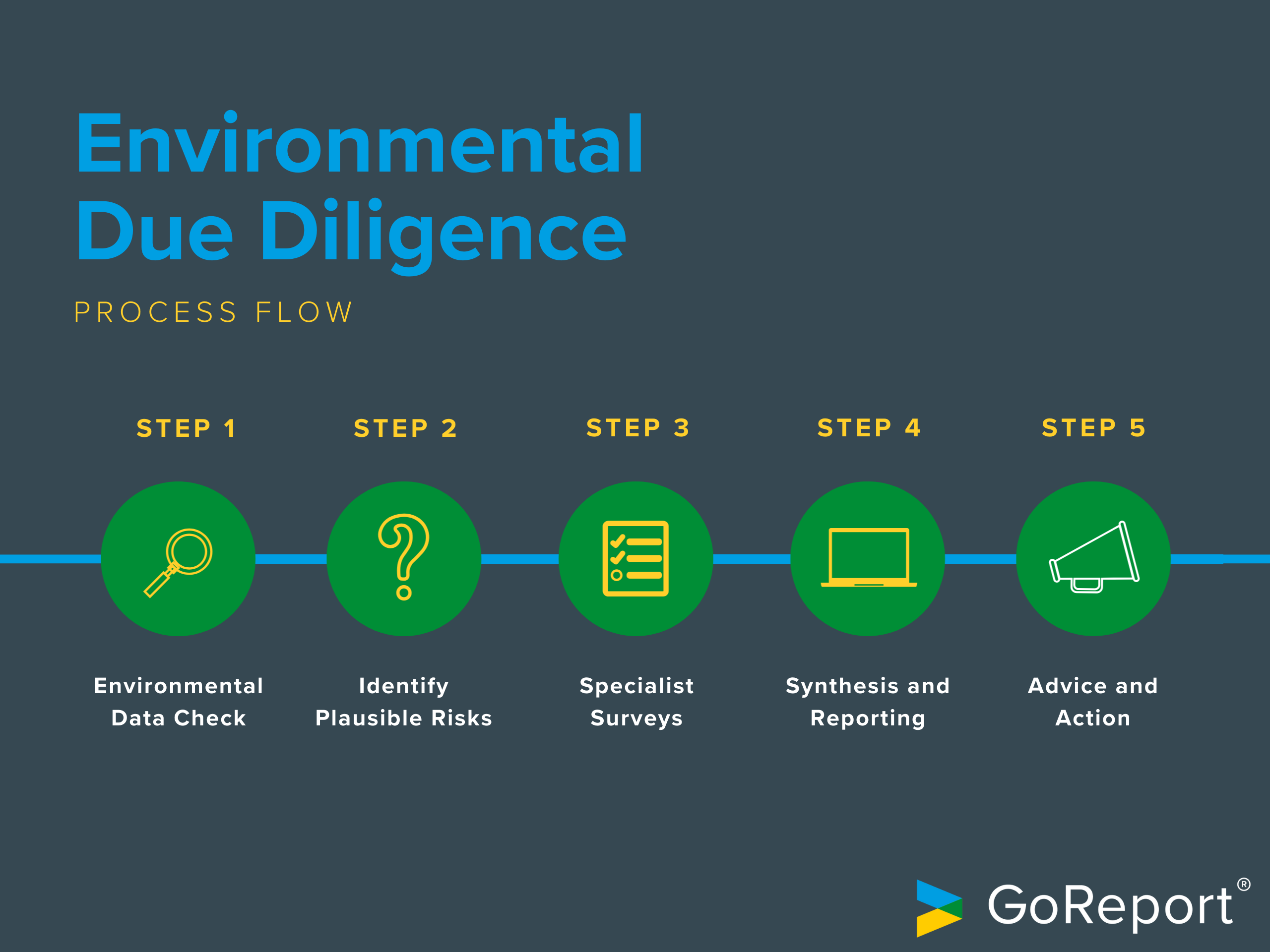What is Environmental Due Diligence? A Complete Guide

Environmental risks don’t usually make the headlines until something goes wrong. A shiny new development is unveiled, only for the press to reveal that the land was once home to industrial waste. A company acquires a warehouse, then discovers asbestos lurking in unexpected places. Or worse, a deal stalls because flood risk assessments were never completed.
These are the moments when clients ask, often with frustration, “Why didn’t anyone flag this sooner?” And more often than not, the responsibility comes back to the surveyor.
This is exactly why the question “what is environmental due diligence?” matters so much. It is the quiet but essential part of property transactions and development projects. Done properly, environmental due diligence protects investments, smooths planning, and saves reputations. Done poorly, it can create costs that spiral out of control and disputes that drag on for months.
In this guide, we’ll break down what environmental due diligence actually involves, why it matters, the risks of skipping it, and the practical steps surveyors can take to get it right. We’ll also clear up some common misconceptions and link it to wider responsibilities like technical due diligence and compliance reporting.
Contexts: what this guide covers
- What is environmental due diligence
- Why environmental due diligence matters for surveyors
- The environmental due diligence process
- Common misconceptions and why they cause trouble
- Risks and consequences of skipping environmental due diligence
- Practical tips and field-tested habits for surveyors
- FAQs on environmental due diligence
What is Environmental Due Diligence
Environmental due diligence is the investigation and assessment of environmental risks linked to a property or site before a transaction or project proceeds. That includes, for example, potential contamination, flood risk, asbestos, radon, biodiversity constraints, waste handling, previous industrial uses, energy performance, and any other environmental factor that may lead to cost, delays, or liability.
In practice, it is a blend of desk research, targeted site work, and clear reporting. The aim is simple: help a client understand what they are buying or signing up for, what it might cost to put it right, and how to plan next steps.
Why Environmental Due Diligence Matters for Surveyors
You are often the first person who can join the dots. A planning condition here. A historic land use note there. A watercourse that creeps into the flood map. Clients do not need lectures, but they do need clear calls on risk and cost with a calm path to action.
The benefits are real:
- Protects investment. Early discovery of contamination or flood risk can change price, design, or even strategy.
- Reduces legal exposure. Owners can face liability under environmental law even if they did not cause the issue.
- Speeds up planning. Proper evidence now prevents last minute scrambles later.
- Safeguards reputation. Nobody wants their project on a local news page for the wrong reasons.
Once clients see the financial logic, the case for environmental due diligence sells itself.
The Environmental Due Diligence Process

Every site is different, but a typical sequence looks like this.
- Desk study
Review historic maps, land use records, local authority information, known pollution events, flood maps, drainage plans, ecological designations, and available energy and sustainability data. - Risk screen
Identify plausible risks: made ground, former industrial activity, tanks, nearby water bodies, sensitive receptors, or previous planning history that hints at constraints. - Targeted surveys
Commission specialists where needed. Common examples include soil and groundwater sampling, asbestos surveys, radon assessments, ecological appraisals, and drainage condition checks. - Synthesis and reporting
Bring findings together in plain language. Summarise risk, likelihood, cost exposure, and mitigation paths. This is where clarity counts. Digital data capture and templated outputs through platforms like GoReport help teams present accurate, consistent reports that stand up to scrutiny. - Advice and action
Translate findings into a plan. That may include negotiating price, adjusting design, seeking planning pre-application advice, agreeing remediation strategies, or setting ongoing monitoring.
The sequence is repeatable, but the detail flexes to the site and the deal.
Risks and Consequences of Skipping Environmental Due Diligence
Here’s the blunt truth: skipping environmental due diligence is a gamble, and not the fun kind. On the surface, a site can look spotless: new paint, tidy grounds, glossy brochure. But beneath that veneer, there could be years of industrial residue in the soil, blocked drainage that floods with the first downpour, or asbestos tucked away in forgotten corners. The problem is you won’t know until it’s too late.
When surveyors cut corners here, the fallout usually looks something like this:
- Unexpected remediation costs
Historic waste, leaking tanks, or contaminated fill material can turn up mid-project. Once discovered, the clean-up bill is yours to explain – and realistically, it’s rarely small. - Planning delays and conditions
Local authorities don’t take chances with environmental risks. If you haven’t done the homework, expect planning refusals, extra conditions, or months lost to resubmissions. - Flooding and drainage failures
Assuming drainage is “fine” is one of the most expensive mistakes going. A blocked culvert or misjudged run-off capacity can leave your client with ankle-deep water and a hefty redesign bill. - Asbestos exposure
Plenty of buildings still hide asbestos in pipe lagging, ceiling tiles, or old plant rooms. Skip the checks, and you risk halting works, paying for licensed removal, and taking the blame for safety failings. - Contractual disputes
Nothing fuels arguments faster than unplanned costs. Landlords, tenants, and purchasers all want to pass the risk elsewhere. Without proper evidence, you’ll find yourself caught in the middle. - Insurance and lender headaches
Banks and insurers hate uncertainty. Weak or missing environmental due diligence can lead to higher premiums, exclusions, or in some cases, refusal to fund the deal at all. - Reputation on the line
No surveyor wants their project in the local paper because of a spill, a sinkhole, or a flood. A single missed red flag can undo years of hard-earned credibility.
Put simply, cutting corners on environmental due diligence doesn’t save time or money. It just defers the pain, and usually magnifies it. Surveyors who guide clients through this process aren’t being over-cautious. They’re protecting the deal, the client, and their own reputation.
Common Misconceptions About Environmental Due Diligence
One of the biggest hurdles surveyors face isn’t the complexity of environmental due diligence itself, but rather the myths that surround it. Clients, lawyers, even colleagues can carry assumptions that sound logical but fall apart in practice. Let’s set the record straight.
- “It’s just about contamination.”
Contamination is a big one, sure, but it’s not the whole story. Environmental due diligence also covers flooding, drainage, asbestos, radon, biodiversity, energy performance, and even how waste is handled. If it can create a hidden cost or delay, it’s part of the picture. - “It’s only a legal tick-box exercise.”
If only. While legislation does drive some checks, the real value is financial. A modest survey cost can save millions in remediation, legal battles, or redesign. Call it a box-tick if you like, but it’s one that keeps the lights on. - “It slows everything down.”
Short-term, yes, it means more checks. Long-term, it avoids months of firefighting when the council blocks planning or a surprise spill halts works. Proper environmental due diligence usually speeds up the overall programme by eliminating nasty surprises. - “Insurance will cover us if something pops up later.”
Not always. Insurers expect reasonable investigation. If you can’t show a solid paper trail of checks, don’t expect the policy to pick up the slack. Weak EDD can leave your client ( and by extension, you) carrying the can. - “Modern buildings don’t need it.”
A new office block made from modern methods of construction might sparkle at first glance, but the ground it sits on could be hiding industrial waste or drainage issues that have nothing to do with the build year. EDD goes beyond shiny facades and investigates what lies beneath. - “That’s the consultant’s job, not ours.”
Specialists will handle sampling, testing, and technical surveys. But it’s the surveyor who brings the pieces together, frames the risk in commercial terms, and reports clearly to the client. Without that coordination, the data is just noise.
The reality is simple: these misconceptions cost time, money, and trust. When surveyors tackle them head-on, clients stop seeing EDD as a burden and start viewing it as what it really is – insurance against disaster, wrapped in evidence.
Practical Tips for Getting Environmental Due Diligence Right
Environmental due diligence doesn’t have to feel like wading through a swamp of reports and regulations. With the right habits, it can be structured, straightforward, and even a bit satisfying when you know you’ve saved your client a fortune – yes, really. Here are some field-tested tips surveyors actually use.
- Start with a risk sketch, not a blank page
Before you commission anything, jot down the obvious risks. Old petrol station? Contamination. Warehouse by a river? Flooding. Post-war office block? Asbestos. This quick “back-of-the-napkin” risk sketch helps you frame the scope properly. - Work in layers
Think of environmental due diligence as peeling an onion. First layer: desk study. Second: targeted surveys if risks look real. Third: design mitigation if you strike gold (or rather, oil). By layering the work, you keep costs proportional and decisions clear. - Tap into local knowledge
Don’t underestimate how much you can learn from facilities teams, site managers, or even the neighbour who’s been there 20 years. They’ll often know about past spills, blocked drains, or headaches that never made it into an official report. - Drainage deserves respect
If there’s one thing that trips projects up, it’s drainage. Get drawings early, confirm outfalls, and don’t be afraid to recommend a quick CCTV check. Sorting it now costs little. Sorting it later can cost a redesign. - Don’t silo environmental checks
Fold environmental due diligence into your wider technical due diligence. Clients don’t want separate, disjointed reports, they want one story with everything joined up. - Record with consistency
Scribbled notes and photos saved as “IMG_3792” won’t help you when a client questions something three months later. Structured digital capture makes reporting smoother, audit trails stronger, and reviews less painful. - Give numbers, not just risks
Clients like to see financial ranges, even broad ones. Telling them “there’s a contamination risk” lands better if you also say “remediation could be £30k–£80k depending on lab results.” Numbers frame reality. - Spell out the “if this, then that”
Keep things actionable: “If hydrocarbons are confirmed above X, then remediation will add Y weeks and cost roughly Z.” These simple decision trees reduce panic when results come back. - Keep everyone in the loop
EDD findings often affect lenders, planners, and insurers as much as clients. Share updates with the right people at the right time to stop surprises derailing progress. - Close the loop
Don’t let reports gather dust. If remediation is done, update the file with validation results and a short residual risk note. That way, when the property is sold again, the evidence is already there.
The truth is, environmental due diligence is less about being a scientist and more about being methodical. With a solid process and the right tools, you make the unknowns known, and that’s what gives your clients confidence.
Environmental due diligence is not a nice-to-have. It is a sensible habit that saves money, time, and reputation. Keep it simple. Start with a risk map. Use a tiered scope. Capture data cleanly. Present a clear story with costs and next steps. When you do that, clients feel confident and projects move.
If you would like to tighten your workflow, standardise templates, and remove manual rework, you can see how surveyors use GoReport to capture, structure, and publish evidence-rich surveys. Book your slot here: Book a free GoReport demo.
Japanese Knotweed Removal: What Actually Works
This is where many myths creep in. Some believe covering Knotweed with tarps or cutting it back will kill it. Others try home remedies with vinegar or salt. In reality, these methods rarely work, especially for the long term. Knotweed is resilient, and most DIY attempts simply delay the problem or cause it to spread further.
Effective removal approaches include:
- Herbicide treatment: Usually glyphosate-based, applied repeatedly over several growing seasons. This does not kill instantly but weakens the plant gradually.
- Excavation: Removing Knotweed-contaminated soil. Effective but costly, and disposal must comply with waste regulations.
- On-site burial: Sometimes Knotweed is buried deep underground with protective membranes, though this requires space and compliance with regulations.
- Root barrier membranes: Installed to prevent Knotweed from spreading into sensitive areas.
For surveyors, the message to clients is simple. Professional removal is almost always necessary. Attempting shortcuts may save money in the short term but usually results in greater expense later.
A realistic expectation should also be set: treatment plans can take years. Clients should view Knotweed not as a quick fix but as a managed process, often requiring professional contractors to provide guarantees acceptable to mortgage lenders.
FAQs on environmental due diligence
What is an example of environmental due diligence
A surveyor reviews historic maps that show a former fuel station on site. They commission soil and groundwater sampling, confirm localised hydrocarbons, and advise a remediation plan with cost and programme impact. The client adjusts price and timeline before exchange.
What is the environmental due diligence law
In the UK and Ireland, several pieces of environmental legislation can create liability for landowners or occupiers where contamination or harm occurs, even if they did not cause it. This is why informed assessment and documented decisions matter.
Who carries out environmental due diligence
Surveyors coordinate the process and report to the client. Specialists deliver technical surveys such as contamination sampling, asbestos checks, radon testing, ecological appraisals, or drainage CCTV.
Does EDD apply to new buildings
Yes. New construction can sit on old problems. Ground conditions and drainage do not reset with the ribbon cutting.
What happens if we ignore environmental risks
Expect cost shocks, delays to planning, insurance queries, disputes between parties, and potential regulatory action. Strong EDD usually costs less than the first month of unplanned remediation.
How does EDD link to technical due diligence
EDD is a key strand within a single, integrated view of asset risk and condition. See our technical due diligence guide for UK surveyors for a full picture.








